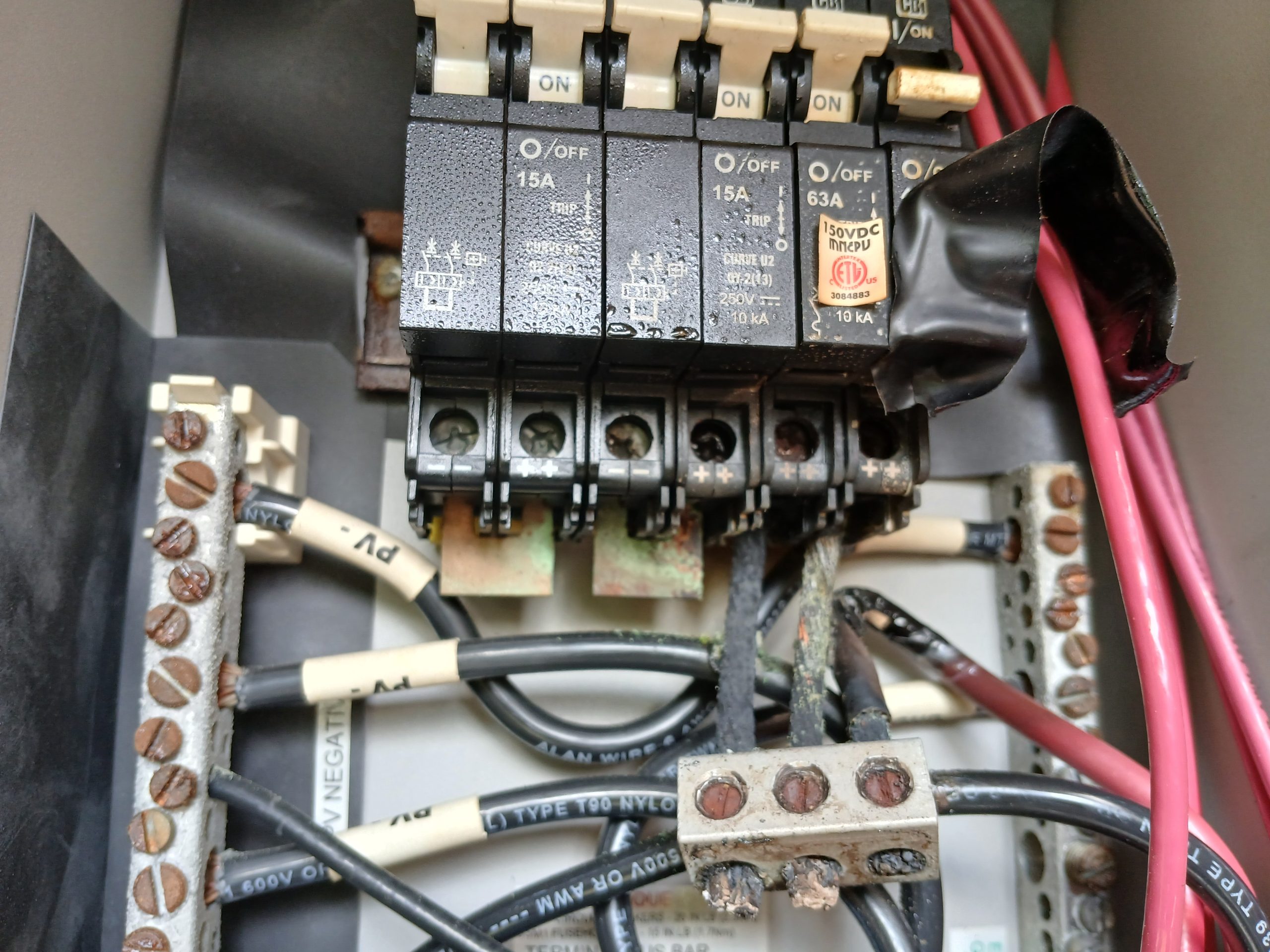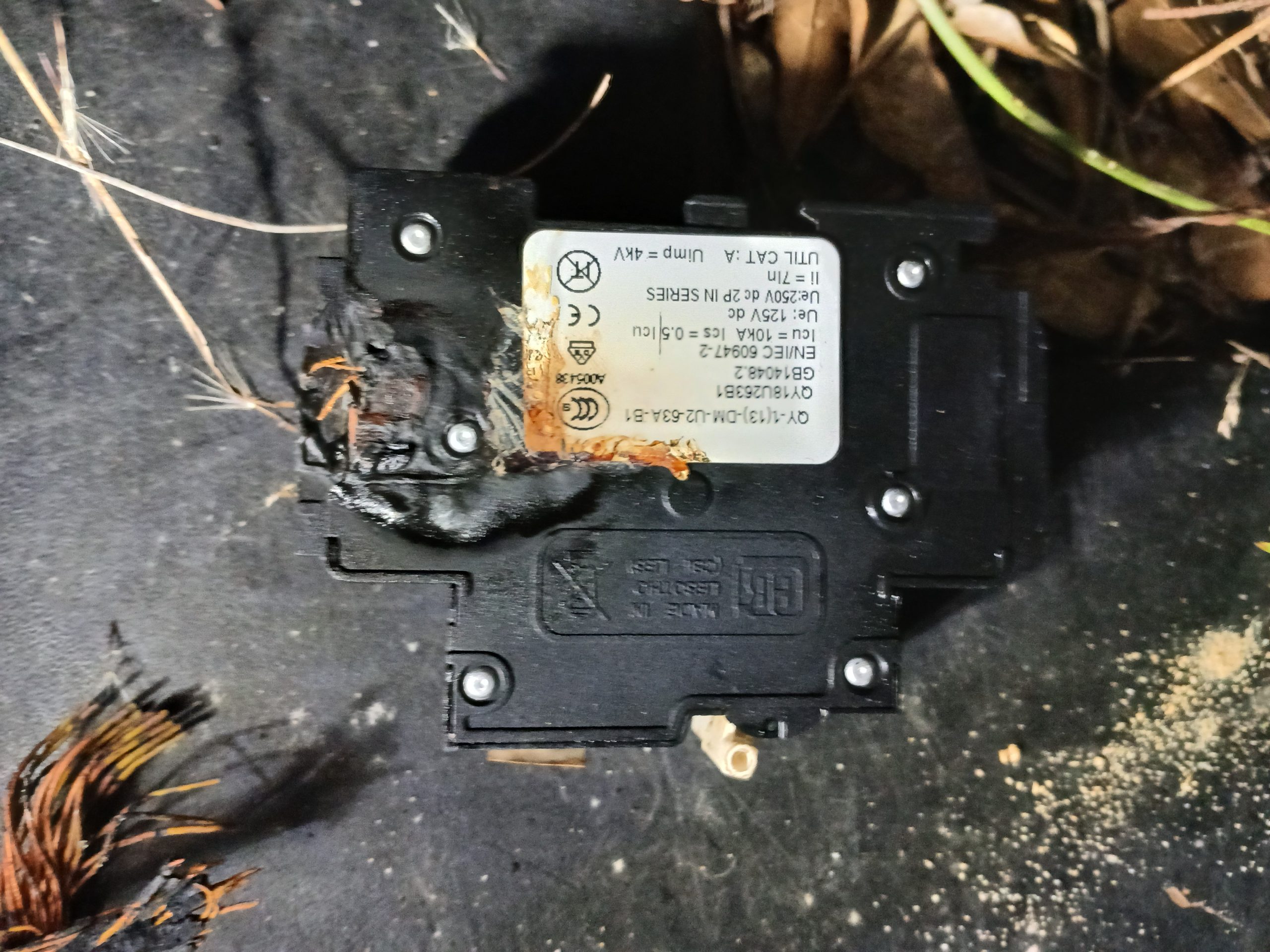A couple of nights ago, I went out to the Man Cave/ Power Room to watch some TV on the giant screen. The displays on the line of LFP battery systems behind the sofa have been showing around 95%, but it is getting warmer and the 3 a/c systems are running more. That night the displays showed about 19%. What the heck? There were some clouds, but it didn’t seem all that cloudy.

Next night, same thing. I have a solar expansion in the works, but that has been delayed. I picked up a DR650 motorcycle wrong and have been down in the back…always a good excuse to not cut trees and clear brush. I decided to look around for easier upgrades, like pulling out some underperforming thin film panels and putting some newer monocrystalline panels with much higher output for the space they take up. I opened the cabinet of a newer part of the system and that is when I saw why the batteries are low. See photo above.

A combiner block was toast and 6 circuit breakers were melted together. Fooey! I needed to leave for a meeting, which was good. Working later, at night, would eliminate 150v DC coming in and allow things to cool off. The breakers were on a DIN rail, so I gathered up some DIN fuse holders and made short work of it. (DIN, in English, means German Industry Standard) I need to order some bigger fuses for the charge controller output, or maybe a breaker, but it is running.

A Temporary Fix Using DIN Fuses. I Keep Spare Parts and Fuse Holders are WAY Cheaper Than Breakers
So what went wrong? This was part of a really nice (overpriced at $140,000) 9 year old mobile system I bought cheap at auction. No junk, yet it cooked. Well, if I look back at most of the failures I have had, it is the same issue. Wherever wires get connected, a lot of places in a big system, the connections can be less than perfect. You get a little corrosion or maybe the copper wire compresses. It doesn’t matter how securely you tighten it, the connection can get just a little looser than it was. That makes resistance. Current running through resistance not only wastes power, it makes a lot of heat.
I periodically check things and go through with a screwdriver and allen wrenches to tighten things, but sometimes it still gets me. Your nose and eyeballs can tell you when things have gone too far. This cabinet is outdoors, so the nose didn’t help. The back of your hand can tell you when things are about to go too far, but at the risk of a burn. And how smart is it to mix fingers and electricity?
A non-contact thermometer, or NCT, is the answer. You may even have one. Those no-touch thermometers everybody bought during the COVID scare work fine. Even better is an infrared camera, though they cost more. A quick scan mid day when the current is really flowing can show you any hot spots you might have. It is normal for things to be a little warm, but not hot. You’ll quickly learn what is normal for your system and be able to keep ahead of problems. But you have to check frequently. Once a week should be good. —Neal
